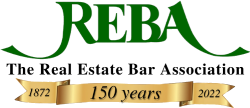On December 22, 2009,
the plaintiff Cohasset Associates sought site plan approval from the Cohasset
Planning Board in order to construct a 30,000 square foot retail building, on
vacant land. After a hearing that was continued eight times, in November 2010 the
Planning Board issued a decision with a condition that no soil absorption
system could be constructed within the 30’ wide green strip. Section 5.4(10) of the Zoning Bylaw
provides as follows:
“Within the highway business, technology
business and light industry districts, there shall be maintained a green strip
not less than thirty feet wide on which to grow grass, bushes, flowers, or
trees which shall be unbuilt upon, unused, unpaved, and not parked upon along
any property line abutting land residentially zoned.”
A “Green Strip” is
defined as “An area landscaped with grass, trees, or shrubs and cannot be built
upon, paved, parked upon, or used for vehicular traffic.”
The green strip
encompasses approximately 28,000 square feet, and approximately 280 square feet
of Soil Absorption System No. 1 lies within the subsurface of the green strip.
The Plaintiff appealed
to the Land Court pursuant to G.L, c.240 Section 14A. In July 2013 the Land
Court found for the Plaintiff and ruled that it was not prepared to allow the
Planning Board to interpret the Bylaw in such a manner as to produce absurd
results:
“The Bylaw sets out no explicit purpose for
the Green Strip. Nevertheless, Sections 5.4(8) and 5.4(10) create visual,
landscaped vegetative areas around certain commercial uses. It is the view of
this court that the legislative purpose which underlies Section 5.4(10) is the
establishment of a visual buffer between commercial and residential uses.
Viewing such purpose in tandem with the Bylaw provisions cited supra, i.e.
those which refer to a range of permitted surface activities and uses,
this court is not prepared to read into the Bylaw a prohibition on legal subsurface
uses. ‘The language of a [bylaw] is not to be enlarged or limited by
construction unless its object and plain meaning require it.’ Tession v.
Commissioner of Dept. of Transitional Assistance, 41 Mass.App. Ct, 479, 482
(1996) (internal citations omitted). Moreover, construing the Green Strip
restrictions as pertaining to lawful subsurface uses, would in no way further
the purpose of a Bylaw provision intended to create a visual buffer.
“A ‘statute or ordinance should not be
construed in a way that produces absurd or unreasonable results when a sensible
construction is readily available.’ Manning v. Boston Redevelopment
Authority, 400 Mass. 440, 453 (1987). In the case at bar, the Planning
Board's interpretation of Section 5.4(10), could lead to a perhaps unintended,
unreasonable result. For example, such interpretation would seemingly preclude
placement of otherwise allowable subsurface utilities including water lines,
electric and telecommunication cables. It is noteworthy in this regard, that
the Board set no limitation on the subsurface depth which is to remain ‘unused’”.
Staszko vs. Moore, Mass. Land Ct., No. 10 MISC 442981 HMG (July 23, 2013)
PAUL F. ALPHEN,
ESQUIRE
BALAS, ALPHEN & SANTOS, P.C.
http://www.lawbas.com

